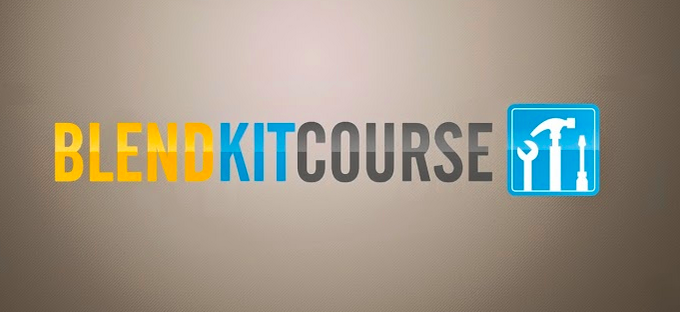Last year, you may recall that I started the BlendKit course hosted on the Canvas Network, and the various reasons I stopped. This year, I’m determined to try it again.
This is my blog post summarizing Chapter 1 of the BlendKit Reader.
What is blended learning?
First, a quick definition — what is blended learning? Most college courses run in 3 modalities:
- traditional, face-to-face courses with most interaction occurring in a classroom setting
- completely online courses with no face-to-face component
- blended courses where “a portion of the traditional face-to-face instruction is replaced by web-based online learning.”
The Sloan Consortium (a professional organization dedicated to postsecondary online learning) defines blended learning as a course where 30%-70% of the instruction is delivered online. At Rutgers, it’s generally believed that blended courses have 50-75% of their class meetings online. Any more than that and the course is considered fully online; any less and it’s considered a face-to-face course.
What are the benefits?
Faculty benefit from blended courses. The blended modality provides a helpful transition between traditional, lecture style courses and completely online courses. They provide the opportunity to try new online activities while maintaining regular in-person meetings where students can ask questions and any issues may be resolved. Faculty like blended courses because there are still opportunities to engage students in person, rather than completely losing the in-class experience. It also allows them to test the latest tools and technologies in a low-risk environment before completely depending upon them in a fully online course.
Universities also benefit by allowing more classes to run in the same limited space. For example, if a single classroom holds two face-to-face classes (Monday/Wednesday/Friday and Tuesday/Thursday), the same space can hold double the number of blended classes, with each class meeting only once a week in the classroom, with other online activities making up the remainder of class time. Blended courses help universities make better use of the classroom space they have available.
At higher education institutions like Rutgers with a large, distributed main campus and many commuter students, traffic problems are a real issue, with students regularly late to class due to traffic conditions outside their control. Blended courses, with fewer in-person classes, offer students the opportunity to complete coursework on their own time, or pursue other opportunities such as internships outside of class.
With so many benefits, it’s no wonder many higher education institutions have pushed for a greater number of blended courses.
What makes designing blended courses different?
With traditional face-to-face courses, most student engagement occurs synchronously inside the classroom. In fully online courses, most student engagement should occur asynchronously within the online classroom (usually a learning management system).
But in a blended course, there’s a choice to be made when designing activities: inside the classroom or online? The answer, according to the BlendKit Reader, is to determine your role as a teacher in the learning process by asking yourself the following questions:
- Should your role be one that is primarily directive or facilitative? Facilitative courses tend to lend themselves to a blended format.
- How important is it for students to interact with one another? Student-collaborative learning is also a key component of blended courses.
What activities should you include in a blended course?
BlendKit Reader references one author who suggests including five elements in a blended course:
- Live, synchronous events. These may be held either in person or remotely using web conferencing software such as Blackboard Collaborate, Adobe Connect, or Big Blue Button.
- Self-paced learning. Self-check quizzes that help students test their understanding of course material can serve as key preparatory material for higher-stakes exams. Or, in a language course, activities such as grammar or vocabulary drills such as those from Quizlet.
- Collaboration. Just because students do not meet in person does not mean they cannot continue working together. Consider tools such as threaded discussions or class wikis to keep students engaged.
- Assessment. How will you know students have met the course objectives? Hopefully the course’s objectives are each mapped to specific activities, so that by completing the activities, students (and the instructor) can confirm they have met the course objectives. Aside from traditional quizzes and tests, those assessments could include journals, portfolios, and presentations.
- Support Materials. These include reference materials, both physical and virtual, FAQ forums, and summaries. Anything that aids learning retention and transfer.
What are the main take-aways about blended learning?
The two main take-aways to creating quality blended courses are the following:
- Focus on the learning first, and the online tools second. Online tools and platforms change all the time, but sound pedagogical techniques do not. For instance, breaking up a final paper into an outline, draft, and final paper provide plenty of opportunities for students to receive feedback and ultimately deliver a better quality paper.
- The time it takes to build a quality blended course takes much longer than most faculty members expect.
